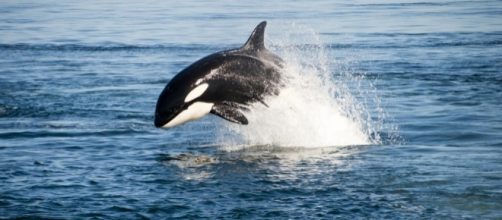The autopsy on Lulu, one of the last surviving killer whales in the waters around Britain, has been completed. The findings of the autopsy were shocking to those involved. It has also raised more questions about how chemicals affect the marine environment. Her skeleton is now being preserved in the National Museums in Scotland in Edinburgh.
The contaminated killer whale
Lulu was found dead in January 2016 on the island of Tiree, located off of Scotland's west coast. The killer whale sadly died after becoming entangled in fishing rope. The Scottish Marine Animal Stranding Scheme (SMASS), along with the University of Aberdeen, conducted an in-depth investigation into Lulu's carcass.
This was to determine her cause of death, her health, and her status as one of Britain's last killer whales.
What they discovered shocked them so much that the headline on their website called the killer whale, "the most contaminated on the planet." While populations of killer whales can have extremely high levels of polychlorinated biphenyl (PCB), the levels found in Lulu were some of the highest SMASS has ever seen.
Evaluation of Lulu's blubber showed that there were concentrations of PCB one hundred times higher than the agreed upon toxicity threshold level for marine mammals. High levels of PCB are associated with poor health, an incapacitated immune function and increased vulnerability to cancers and being infertile.
This is causing those who did the investigation to wonder if Lulu could have had her health and reproductive fitness affected by the PCB. Lulu was at least 20 years old and had never reproduced despite her age.
What is PCB and how does it affect marine life?
From the 1920s until they were banned in 1979, PCBs were widely used in the United States. They were used in television sets, refrigerators, capacitors and other electric appliances. They were also often sprayed on dirt roads in order to keep dust down. The U.S. National Ocean Service, whose parent agency is the National Oceanic and Atmospheric Administration (NOAA), estimates that 1.5 billion pounds of PCB were used over that time.
Once PCB gets into the marine environment, it is extremely difficult, if not impossible, to get rid of. This is because it builds up through the food chain, affecting everything in the marine environment. There have been traces of PCB found in people and animals all around the world.


